- Joined
- Oct 14, 2020
- Messages
- 27,459
- Likes
- 189,628
interesting or rather curious bit is that K-electric has been in good profits for a few years. even if we assume they are buying feed stock at a very low cost, have to wonder how are they managing to collect their electricity dues in the current economic environment of theirs.1. massive circular debt.
2. Extracting coal is not cheap. And Chinese have resource control.
3. Massive power theft
4. 10% Zardari, Bhutto, Altaf Husain.
5. Transmission infra is abysmal
6. Power is mainly for Punjab. Sindhis especially those in thar will continue to live like donkeys.
7. SRA adopting BLA tactics to drive out poonjabis for their resource crimes.
But if they are really developing, we must hack their power grid or do other things to stall development. A developing Pakshitstan is a clear security threat for us.
I agree to all your points but I have a simple observation to make. It's a Pakistani-Chinese operation. They'd come ways to fuck if up and run it into the ground more completely than perhaps even we can.1. massive circular debt.
2. Extracting coal is not cheap. And Chinese have resource control.
3. Massive power theft
4. 10% Zardari, Bhutto, Altaf Husain.
5. Transmission infra is abysmal
6. Power is mainly for Punjab. Sindhis especially those in thar will continue to live like donkeys.
7. SRA adopting BLA tactics to drive out poonjabis for their resource crimes.
But if they are really developing, we must hack their power grid or do other things to stall development. A developing Pakshitstan is a clear security threat for us.
Agar BLA ko RAW direct Kar Rahe Hai to "Good Job, RAW."Pakistan gaya tel lene.
Tent etc export grew.. hmm
ShutDown Pakistan.
This is the time to subsidize textile export and capture these markets and a FTA by the time pakistan recovers.

Ye 430 million ki fdi de kon raha haiFDI drops by more than half to $430m
KARACHI: Foreign direct investment (FDI) coming into the country plummeted by more than half to $430.1 million in the first five months (July to November) of the current fiscal year, the central bank data showed on Friday. The inflows were $884.9m during the same period a year ago.

FDI drops by more than half to $430m
The falling inflows reflect foreigners don’t consider Pakistan an attractive destination for investment at present.www.dawn.com
Khud ka hi Paisa hai jo politicians reroute karke vapis bhejte hai real estate me..Ye 430 million ki fdi de kon raha hai
50% Chini advance hai..... brides ke liyeYe 430 million ki fdi de kon raha hai

For politicians they are quite rich, aren't they ?Khud ka hi Paisa hai jo politicians reroute karke vapis bhejte hai real estate me..
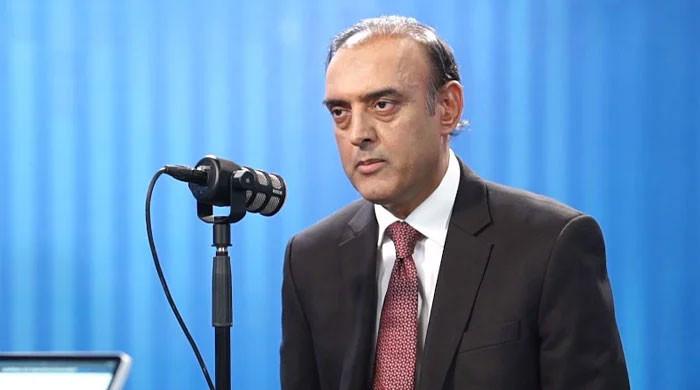
This article has clearly laid out some good investments done to improve k-electric’s infrastructure which they claim led to profitability. I guess chinkis are behind these thoughts and investments. Need to hack in or do some ground infra sabotage to not let Karachi develop, as it poses a clear strategic threat for us.interesting or rather curious bit is that K-electric has been in good profits for a few years. even if we assume they are buying feed stock at a very low cost, have to wonder how are they managing to collect their electricity dues in the current economic environment of theirs.
NoFor politicians they are quite rich, aren't they ?
Are they richer than kalmadi or a raja types of india?

The story of Pakistan’s economy is incomplete without the character of its debt. Pakistan’s economic challenge began following Independence in August 1947, as it had to seek financial help. The structural diagnosis of Pakistan’s debt requires a deep understanding of policy interventions, which put the country on a debt trajectory, and an investigation of how certain groups pushed the country into debt to protect their vested interests.
The two South Asian economies — India and Pakistan — were in a dismal state at the time of Partition. Pakistan inherited 17 percent of colonial India’s revenue stream and about 33 percent of its army then. This inheritance set the budgetary priorities for the many governments to come.
Although we shared some economic experiences with neighbouring India, we could not come out of the debt trap since entering the first International Monetary Fund (IMF) programme in 1958. With a total of 22 IMF programmes, Pakistan has stayed under the multilateral lender’s shadow most of its independent life. In contrast, India and Bangladesh have reached out to the IMF only on seven and 10 occasions, respectively.
While Bangladesh’s economy no longer depends on external debt, studies show that it still happens to have a substantial negative relationship between economic growth and external debt. It must then be an even greater source of concern for Pakistan, which increasingly depends on external debt to meet its financing needs.
In the past 75 years, Pakistan has frequently faced multiple episodes of near-crisis experiences, where it had to face enormous pressures on fiscal imbalances and on its balance of payments. Time and again, the IMF has provided aid to prevent further damage, which Pakistan used to bring around short-term stability in the economy, using conventional economic stabilisation tools.
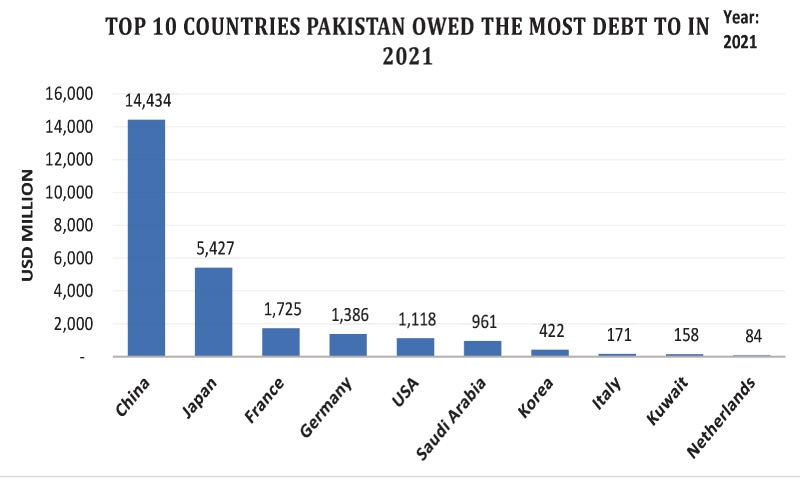
These crises are frequent, and their effects have accumulated in the long run. The long-term challenges have always been there and have been affecting the overall economic growth and development of the country.
WHAT HAS BROUGHT US HERE?India did lag behind Pakistan in the beginning. And at some point, in the 1980s, Pakistan’s economic growth exceeded India’s. But India’s 1990 economic reforms put it on the right path of sustainable growth. However, in Pakistan, boom and bust remained at the centre of its economic journey.
After the first decade, Pakistan started spending more than it was earning. The size of the government continued to increase as government jobs were being exchanged with votes by political parties and with the support of military dictators, which mounted pressure on the national kitty.
The trajectory of Pakistan’s economy cannot be explained without delving into the debt the country had incurred over the last 75 years. The debt added to the combination of factors which translated into lower growth. This has resulted in the country not being able to maintain macroeconomic stability since Independence.
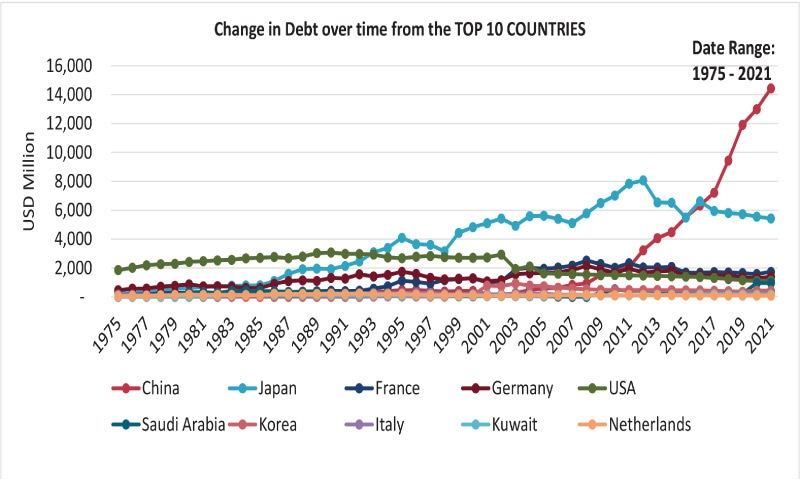
Pakistan’s current economic situation is evidence of the unrelenting issues in the structure of the economy. The country faces an unstable GDP, record-low exchange rate, accompanied with other issues, such as rising inflation and a widening current account deficit.
When it comes to the people, whose living is substantially affected by the instability and shocks, what serves as an aid in society’s ability in withstanding these economic shocks is the banking sector. At the same time, the successful reform of the banking sector is a necessary condition for fiscal and monetary stabilisation.
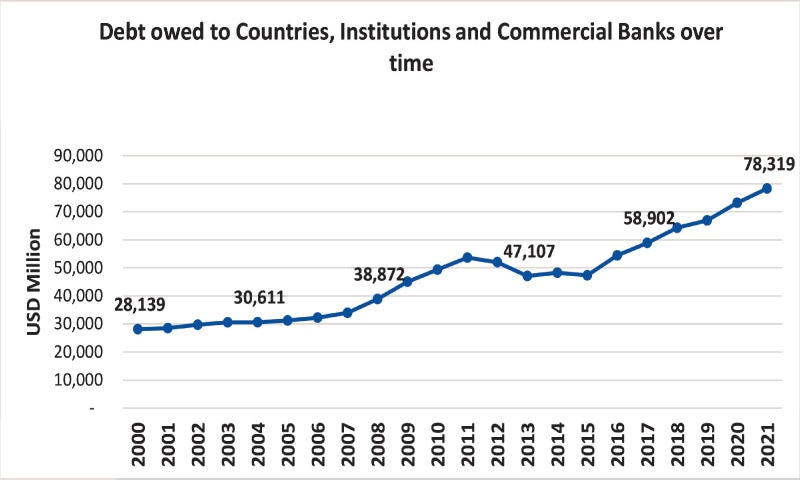
ECONOMIC AND POLITICAL ORDERIn the past 75 years, Pakistan has frequently faced multiple episodes of near-crisis experiences, where it had to face enormous pressures on fiscal imbalances and on its balance of payments. Time and again, the IMF has provided aid to prevent further damage, which Pakistan used to bring around short-term stability in the economy, using conventional economic stabilisation tools.
The data in Graphs 1 and 2 shows how Pakistan went to every possible door to get loans and financial support, from commercial banks to friendly countries, and from international lenders to multilateral development agencies.
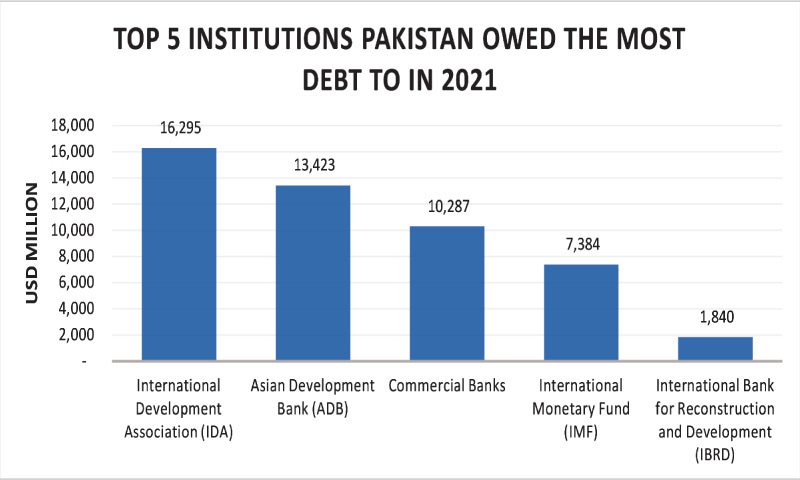
But instead of fixing the economy at the structural level, the state has made it a rentier economy — extracting rent in an unproductive manner. Pakistan’s financial elite largely remains engaged in securing different subsidies, even if it makes the country borrow more and add to the existing debt.
Attracting investment and promoting innovation amidst piled debt has always remained a huge challenge for Pakistan. Under-development and vulnerabilities in these areas limit the effectiveness of macroeconomic policy for the entire economy.
A mature and well-developed domestic financing sector is important for enterprises to function, including micro, small and medium-sized enterprises (MSMEs) that instigate entrepreneurship and innovation. Innovation plays a part in the development of the economy and helps reduce poverty by creating new jobs.
However, in Pakistan’s case, the shortcomings in the business environment have not encouraged economic growth, and Pakistan is ranked 108th in the ranking of countries in the World Bank’s Doing Business report.
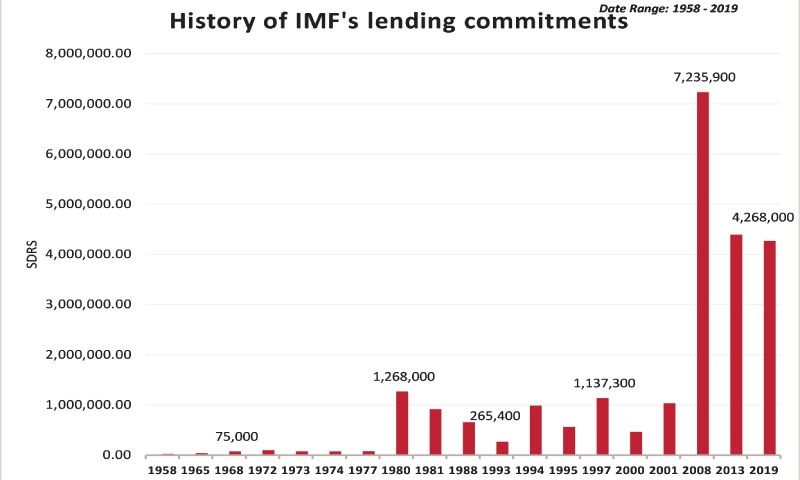
Agriculture is one of the major sectors of Pakistan’s economy, with a contribution of 24 percent to the Gross National Product and 19 percent to the Gross Domestic Product (GDP).
This sector is the backbone of the economy as it provides sustenance for the whole population and contributes to foreign trade. It also employs at least half of the Pakistani labour force. With the development of the agriculture sector, the country will become self-sustainable in food. The export potential is also huge and can bring valuable foreign exchange.
Ministry of Finance, Government of PakistanOne of the reasons for the country’s balance of payment crisis is the negligence of the agriculture sector. In recent years, Pakistan has started importing wheat and cotton which has brought more pressure on the country’s import bill. The opportunities lost in agriculture can be attributed to the key policies that have kept Pakistan’s focus on areas that were not fruitful for the economy.
The World Bank’s latest GDP growth estimates for financial year 2020-21 is 8.7 percent for India and 4.3 percent for Pakistan. Between 1993 and 2020, Pakistan could achieve more than 6 percent GDP growth for only two years — 2004 and 2005 — whereas India’s GDP growth exceeded 6 percent 18 times during the same period.
Our obligations for debt servicing are increasing every passing day, and our imports exceed our exports almost all the time.
The question we hear the most is why Pakistan has not been able to keep up with its neighbouring economies? The answer lies in our own economic decisions and priorities.
With a national aptitude and potential for agriculture, the country has almost neglected the sector in the last 40 years or so. Agricultural land is increasingly being converted into housing societies without any planning.
Getting out of the current debt trap is critical for the country’s economic success. But it will not be possible without taking some tough decision.
was looking for something else, but found this..ECONOMY: PAKISTAN’S STORY OF DEBT

Photo by White Star
The recent debate on whether Pakistan is going to default or not requires revisiting the country’s current debt and reviewing how it has accumulated over time.
The trajectory of Pakistan’s economy cannot be explained without delving into the debt it has accumulated over the last 75 years

Graph 1. Source: Finance Division, Pakistan Economic Survey 2021-22 Islamabad, Ministry of Finance, Government of Pakistan
WHAT HAS BROUGHT US HERE?

Graph 2. Source: Finance Division, Handbook of Statistics on Pakistan Economy 2020, Pakistan Economic Surveys, various years, Islamabad, Ministry of Finance, Government of Pakistan

Graph 4. Source: Finance Division, Handbook of Statistics on Pakistan Economy 2020, Pakistan Economic Surveys, various years, Islamabad,
ECONOMIC AND POLITICAL ORDER

Graph 3. Source: Finance Division, Pakistan Economic Survey 2021-22, Islamabad, Ministry of Finance, Government of Pakistan.

Graph 5. Source: Finance Division, Pakistan Economic Survey, various years, Islamabad, Ministry of Finance, Government of Pakistan
THE ROAD TO SUSTAINABILITY
Ministry of Finance, Government of Pakistan
| Thread starter | Similar threads | Forum | Replies | Date |
|---|---|---|---|---|
|
|
India added 20% of Pakistan GDP in 2 days to her economy. | Economy & Infrastructure | 125 | |
|
|
Pakistan will be 16th largest economy by 2050: PWC report | Pakistan | 75 | |
| B | Pakistan's economy facing existential crisis: Report | Pakistan | 2 | |
|
|
Pakistan's economy better than India's: Bloomberg | Pakistan | 38 |
